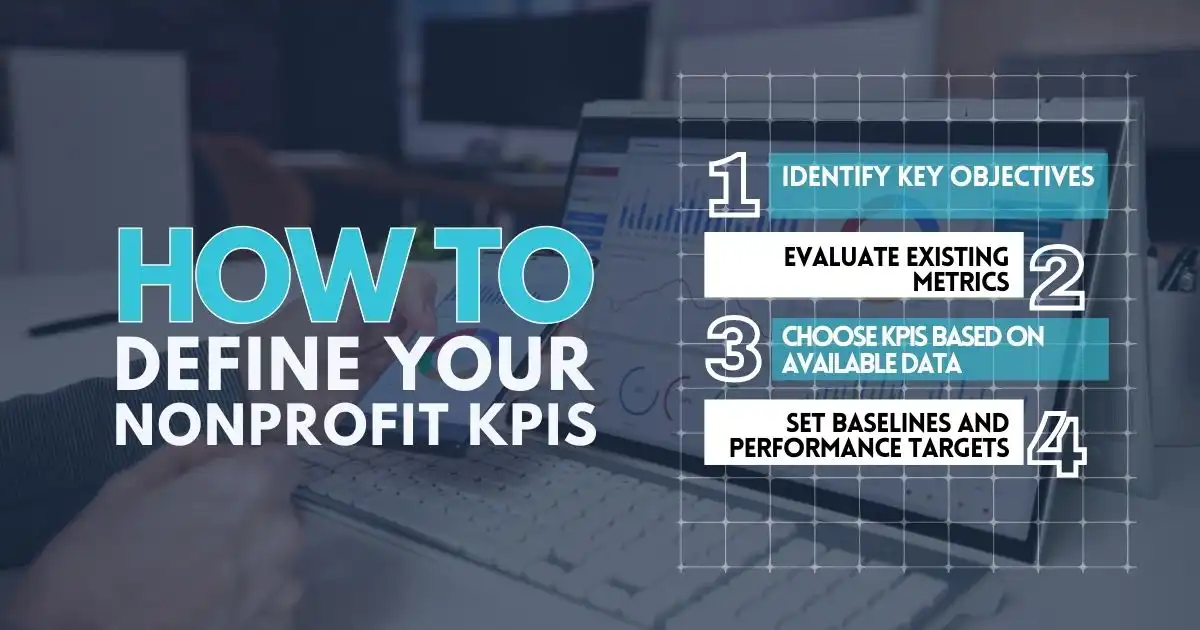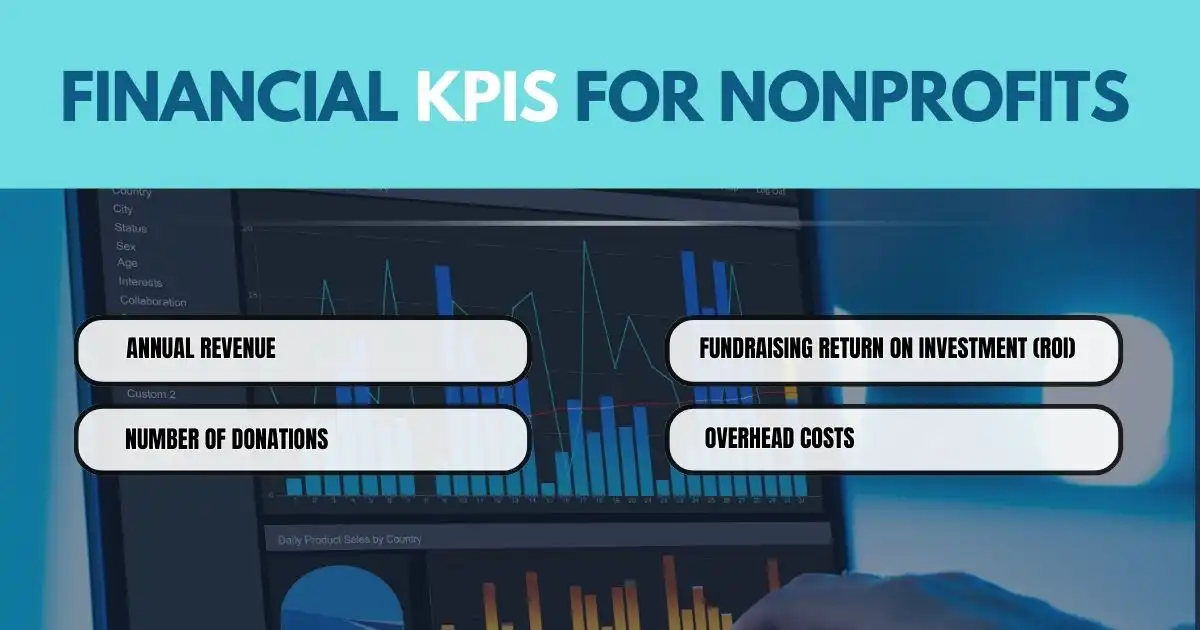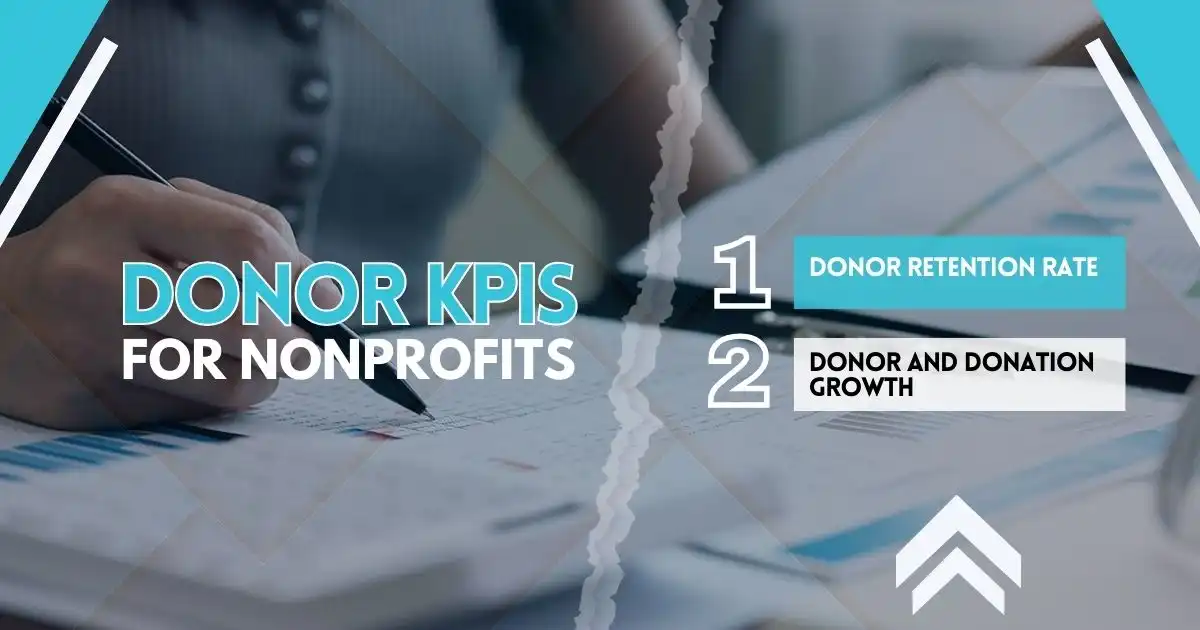Do you know what separates thriving nonprofits from those struggling to stay afloat? It’s not just passion—it’s knowing what to track. Without the right numbers, it’s impossible to tell if your fundraising, donor retention, or outreach efforts are working.
Why do some organizations keep donors coming back while others lose support after one donation? Are your fundraising campaigns growing, or are they just spinning their wheels?
Tracking the right KPIs gives you the answers. But which ones actually drive success? And how can you use them to fuel your nonprofit’s growth?
What Are KPIs?
KPIs serve as scorecards that help organizations measure their performance across various areas, from financial health to community impact. For nonprofits, they track key aspects like donations, fundraising success, and community engagement.
Each nonprofit has unique KPIs that align with its goals and mission. A group focused on fundraising may prioritize event participation and revenue metrics, while one emphasizing social media might track page views, email sign-ups, and online donations. Monitoring these KPIs helps organizations identify strengths, address challenges, and make informed decisions.
Without KPIs, you risk overlooking trends or issues that could limit your impact. Let’s break down how to define KPIs for your nonprofit and explore some common examples.
Important Factors in Choosing Nonprofit KPIs
KPIs track your nonprofit’s performance, but selecting the right ones can be challenging. They should align with your mission and provide valuable insights.
Consider these factors:
- Align with your nonprofit’s mission and long-term objectives.
- Matter to your supporters, donors, board members, and funders.
- Are measurable with accessible data.
- Support informed, data-driven decision-making.
How to Define Your Nonprofit KPIs

Follow these four steps to set meaningful KPIs for your nonprofit:
Step 1. Identify Key Objectives
Before defining KPIs, clarify what your nonprofit aims to achieve. Go beyond the mission statement—focus on specific goals.
Start by listing your organization’s key objectives. These will guide your KPI selection and ensure you’re tracking progress in the right areas.
Step 2. Evaluate Existing Metrics
Assess how you’re currently measuring success. You may already be tracking useful data, even if you haven’t formalized them as KPIs.
Consider what information you need to determine if you’re meeting your goals. For example, if increasing revenue from program fees is a priority, monitoring revenue growth will be a critical KPI.
Step 3. Choose KPIs Based on Available Data
KPIs are only as valuable as the data behind them. If your data is incomplete or unreliable, your insights may be skewed.
Review the data you have already collected and identify any gaps. If a potential KPI is backed by strong, accessible data, it’s more likely to provide meaningful insights.
Step 4. Set Baselines and Performance Targets
Establishing a baseline means analyzing past data to understand where you currently stand.
For instance, if you’re tracking your program expense ratio, you need to determine your current ratio before setting a goal.
Once you have a baseline, define your target—what improvement or change do you want to see? Set a clear timeline for achieving this goal to stay focused and accountable.
Financial KPIs for Nonprofits

While revenue generation isn’t the primary goal of a nonprofit, financial stability is essential for long-term success. Strong financial health ensures sustainability and the ability to fulfill the organization’s mission.
Here are important financial metrics nonprofits should track:
Annual Revenue
This metric reflects the total income generated from donations, fees, corporate sponsorships, and government grants. It helps nonprofits assess financial growth and stability.
- Year-over-Year (YOY) Growth – Measures the impact of marketing and fundraising efforts on revenue. Typically tracked as a percentage, it highlights financial progress over time.
Number of Donations
Tracking donation count provides insight into donor engagement and demographics. This metric helps nonprofits understand their audience and tailor outreach efforts.
- Average Donation Amount – Helps analyze donor behavior and campaign effectiveness. A higher average donation may indicate strong supporter commitment.
Fundraising Return on Investment (ROI)
Evaluates the efficiency of fundraising campaigns by comparing the amount raised to the resources invested.
- Annual Investments – This covers costs related to marketing and program execution.
- Annual Funds Raised – Represents total donations received.
Formula:
Fundraising ROI = Annual Funds Raised ÷ Annual Investments
A strong ROI indicates an effective campaign, allowing nonprofits to refine strategies and allocate resources more efficiently.
Overhead Costs
Overhead expenses include the administrative and operational costs necessary to keep the organization running. While essential, high overhead can deter donors who prefer their contributions to directly support the cause.
Formula:
Overhead % = Overhead Costs ÷ Annual Revenue
Maintaining a low overhead percentage signals financial responsibility and transparency, helping build donor trust.
Campaign Delivery KPIs for Nonprofits
Nonprofits rely on effective campaigns to connect with supporters and drive donations. Traditionally, fundraising happened through in-person events, but today, many efforts have shifted online.
To maximize impact, organizations must track which outreach methods resonate most with their audience. Without this insight, efforts can become scattered, reducing overall effectiveness.
Here are important campaign delivery KPIs every nonprofit should track:
- Total People Reached – This KPI measures how many individuals engage with an organization’s programs or events. A high number suggests strong outreach and an impactful mission.
- Visitor-to-Donor Conversion Rate – This metric tracks how many people who interact with a campaign donate. It’s a direct measure of a nonprofit’s ability to turn interest into financial support.
Formula:
Visitor-to-donor conversion rate = (Total donors / Total campaign participants) × 100%
Tracking this KPI helps nonprofits understand what motivates supporters to contribute.
Other key performance metrics include:
- Pledge Fulfillment Rate – Measures how many pledged donations are completed, indicating donor commitment.
- Donor Churn – Tracks the percentage of donors lost over time, highlighting retention challenges.
- New Donors Acquired – Evaluates how well a campaign attracts fresh supporters.
- Number of Donors/Donations – Identifies the most effective fundraising channels by comparing donation volume across campaigns.
A single KPI doesn’t tell the whole story. Nonprofits should analyze multiple metrics together—such as new donors acquired alongside conversion rates—to uncover the most effective strategies.
Donor KPIs for Nonprofits

Donors are the backbone of any nonprofit. Keeping them engaged ensures long-term sustainability. Here are two critical donor performance metrics:
Donor Retention Rate
This metric measures the percentage of donors who contribute more than once, reflecting the strength of an organization’s relationships. Since acquiring new donors requires significant effort, retaining existing ones is crucial.
Formula:
Donor retention rate = (Repeat donors / Total donors in period one) × 100%
A high retention rate signals trust and fulfillment of the nonprofit’s mission.
Donor and Donation Growth
These KPIs track increases in both the number of donors and total donations over time, providing insight into financial stability.
Formulas:
- Donor growth = Donors in period two – Donors in period one
- Donation growth = Donations in period two – Donations in period one
A positive trend in these metrics indicates that a nonprofit is successfully expanding its reach and financial support.
By monitoring these KPIs, nonprofits can fine-tune their strategies, build stronger donor relationships, and maximize their impact.
Numbers Don’t Lie—Are You Tracking the Right Ones?
Passion fuels a nonprofit, but data keeps it alive. If you’re not tracking the right KPIs, you might be throwing darts in the dark—hoping for impact but never really knowing.
Think about it: Would you drive a car without a dashboard? Without KPIs, that’s what running a nonprofit looks like. You may feel like you’re moving forward, but are you on the right road? Are donors sticking around or disappearing after one donation? Are your campaigns growing, or are they just noise?
It’s time to stop guessing. Start measuring what matters. Track donor retention, campaign reach, and fundraising ROI. Find the leaks in your strategy and fix them before your nonprofit runs on empty.
Data isn’t just numbers—it’s your roadmap to making a real impact. So, what will you do next? Keep driving blind or start steering with purpose?
FAQs
What are the most important nonprofit metrics to track?
Key nonprofit metrics include donor retention rate, fundraising ROI, total donations, and program efficiency. These help measure financial health, donor engagement, and overall impact. Tracking the right metrics ensures sustainable growth and mission success.
What financial ratios should nonprofit organizations monitor?
Nonprofits should track the program expense ratio (funds spent on programs vs. total expenses), fundraising efficiency (funds raised vs. cost of fundraising), and operating reserves ratio (months of expenses covered by reserves). These ratios ensure financial stability and transparency.
Which KPI will executives be more responsive to?
Executives focus on high-level KPIs like fundraising growth, donor lifetime value, and impact per dollar spent. These metrics show long-term sustainability and effectiveness, making them critical for strategic decision-making.
How can a nonprofit KPI dashboard improve decision-making?
A nonprofit KPI dashboard provides real-time insights into key performance indicators, helping leaders track financial health, donor trends, and campaign success. A well-designed dashboard simplifies data analysis and drives informed decisions.
